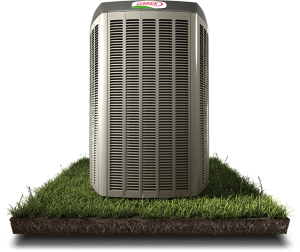Installing a residential HVAC system is a significant investment that requires careful planning and consideration. Whether you are upgrading an existing system or installing a new one, it is essential to understand the process and factors involved in a successful installation. In this ultimate guide, we will cover everything you need to know about residential HVAC system installation to help you make informed decisions and ensure optimal comfort in your home.
Choosing the Right HVAC System
Before starting the installation process, it is crucial to select the right HVAC system for your home. Consider the following factors when choosing a system:
1. Size and Capacity
- Determine the size and capacity of the HVAC system based on the square footage of your home.
- An undersized system will struggle to heat or cool your home efficiently, while an oversized system can lead to energy waste.
2. Energy Efficiency
- Look for energy-efficient systems with high SEER (Seasonal Energy Efficiency Ratio) ratings to reduce energy consumption and lower utility bills.
- Consider investing in a system with ENERGY STAR certification for maximum energy savings.
Preparing for Installation
Proper preparation is essential to ensure a smooth and successful HVAC system installation. Here are some steps to take before the installation process begins:
1. Site Inspection
- Have a professional HVAC technician inspect your home to assess the best location for the indoor and outdoor units.
- Ensure that the installation site has proper ventilation and sufficient space for the units.
2. Ductwork Evaluation
- Inspect your existing ductwork for leaks, blockages, or damage that may affect the performance of the new HVAC system.
- Consider upgrading or repairing the ductwork to maximize airflow and efficiency.
Installation Process
Once you have selected the right HVAC system and prepared your home for installation, it is time to proceed with the installation process. Here is an overview of the steps involved:
1. Unit Placement
- Install the indoor unit in a central location with good air circulation and access to the outdoor unit.
- Place the outdoor unit on a stable and level surface away from obstructions to ensure proper airflow.
2. Ductwork Installation
- Connect the indoor and outdoor units with insulated ductwork to distribute air throughout your home.
- Seal any gaps or leaks in the ductwork to prevent energy loss and maximize efficiency.
3. Electrical Wiring
- Hire a licensed electrician to connect the HVAC system to your home's electrical system safely and according to local codes.
- Ensure that the electrical connections are secure and properly grounded to prevent electrical hazards.
Testing and Commissioning
After the HVAC system is installed, it is essential to test and commission the system to ensure proper functioning and efficiency. Here are some steps to take during this phase:
1. System Testing
- Turn on the HVAC system and check for proper airflow and temperature control in each room of your home.
- Verify that the system is heating and cooling effectively without any unusual noises or odors.
2. Air Quality Check
- Test the indoor air quality to ensure that the HVAC system is providing clean and healthy air for you and your family.
- Consider installing air purifiers or filters to enhance indoor air quality and remove allergens and contaminants.
Maintenance and Care
Regular maintenance is essential to keep your HVAC system running smoothly and efficiently. Here are some tips for maintaining your HVAC system:
1. Filter Replacement
- Replace the air filters in your HVAC system every 1-3 months to ensure proper airflow and indoor air quality.
- Consider using high-efficiency filters for better air filtration and improved system performance.
2. Professional Inspections
- Schedule regular inspections and maintenance checks with a qualified HVAC technician to keep your system in top condition.
- Address any issues or repairs promptly to prevent costly breakdowns and ensure the longevity of your HVAC system.
By following this ultimate guide to residential HVAC system installation, you can make informed decisions and ensure the comfort and efficiency of your home heating and cooling system. Remember to consult with HVAC professionals for expert advice and assistance throughout the installation process.
